There’s a reason I’ve visited Japan five times… it offers a seemingly endless array of experiences. From exploring the buzzing neon streets of Tokyo to the serene temples and gardens of Kyoto, and the charming small towns nestled in the Japanese Alps, there’s so much to uncover. If you’re looking to fully immerse yourself in the wonders of this unique island nation, spending one month in Japan is the perfect way to do it.
My tailored 4 week Japan itinerary is packed with both must-sees and underrated gems, perfect for first-timers. This practical travel guide will take you through the best of Japan, day by day, with insider tips along the way to make the most of your adventures.
At a Glance: 4 Week Japan Itinerary Overview
Here’s a quick breakdown of my one month in Japan itinerary:
Week 1:
- Days 1-5: Tokyo
- Days 5-8: Fuji Five Lakes
Week 2:
- Days 8-11: Osaka
- Days 11-12: Koyasan
- Days 12-14: Osaka (day trips to Nara, Himeji and Kobe)
Week 3:
- Days 14-16: Hiroshima & Miyajima
- Days 16-21: Kyoto
Week 4:
- Days 21-27: Japanese Alps (Kanazawa, Takayama and Matsumoto)
- Days 27-28: Tokyo
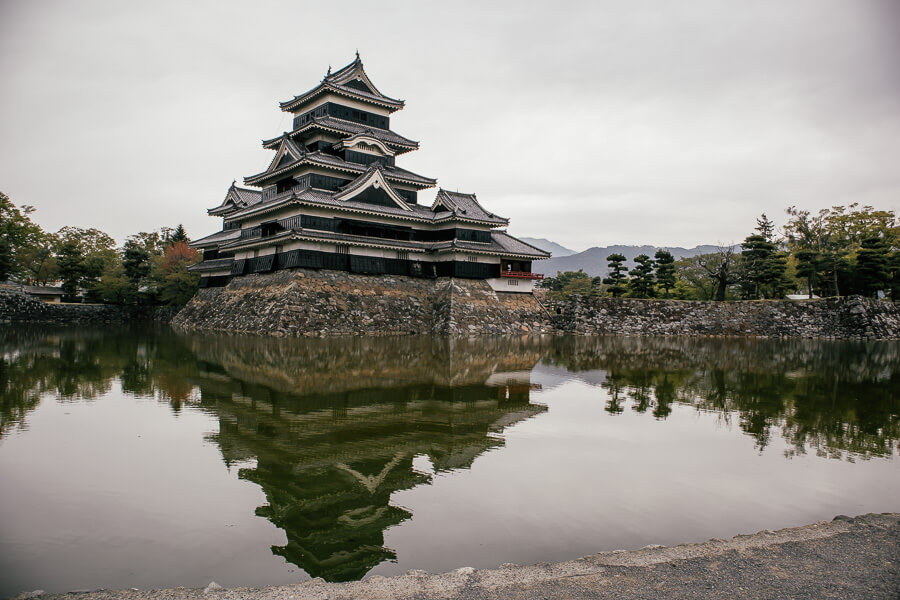
Best Time to Visit
You can visit Japan all year round, however, I would suggest that generally spring or autumn is the best time to visit with this itinerary. Personally, I’ve been to three times in winter, once in autumn and once in spring.
My most recent 1 month trip to Japan was timed to catch the spring cherry blossoms in Tokyo at the end of March. Autumn is another beautiful time of the year to visit, thanks to the amazing autumn foliage that spreads across the country.
However, these times can also be some of the most popular with tourists – particularly peak cherry blossom season in early April. Consider the shoulder months of February/March, or September/early October for off-peak travel periods.
And of course, you can’t forget the amazing snow that graces the mountains of Japan come winter time – perfect for my fellow powder hounds! This itinerary would also work for winter, and you could visit one of the ski towns in the Nagano region (like Hakuba, Nozawa Onsen or Myoko Kogen) or hop on a short domestic flight to Hokkaido to ski in Niseko. Just remember to pack the thermals if visiting Japan in winter!
I haven’t visited Japan in the summer months of June to August, however, I personally wouldn’t enjoy visit during this time. Summer in Japan can be humid and sweltering, which I would find unbearable in built-up cities like Osaka and Tokyo (but a great time to go hiking in the rural areas out of the city!).

How to Get Around Japan
This one month in Japan itinerary relies on using Japan’s efficient and relatively straightforward public transportation system to get around.
You’ll use a combination of local subways and trains, the high-speed Shinkansen “bullet train” and buses. We also caught one or two taxis in cities like Kyoto and Kanazawa that rely more on the slower bus network than the subway.
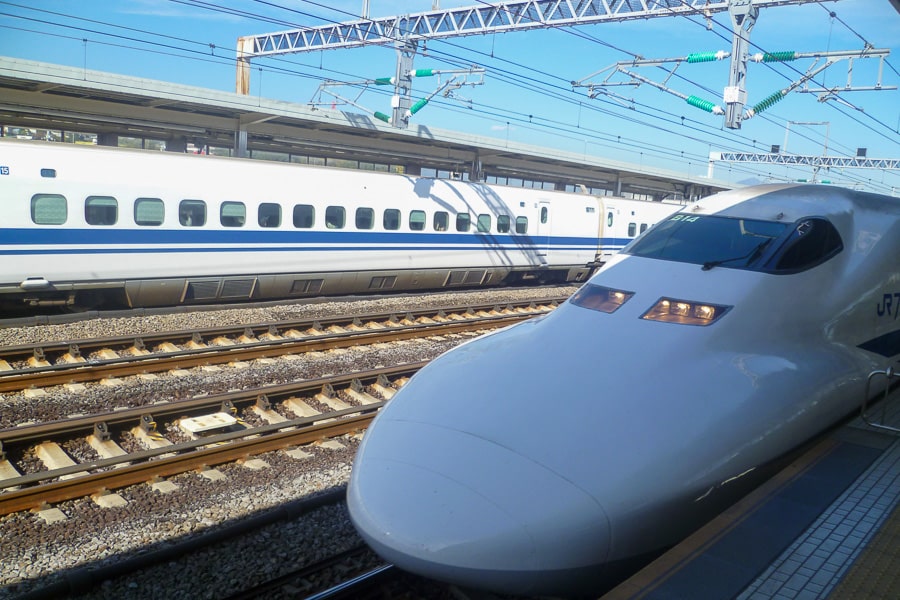
Using a Suica
One of my top travel tips for travellers to Japan is to get a Suica card for use on the subway in Tokyo and Osaka. These prepaid cards can be used to quickly and easily tap on and tap off when getting the subway and buses throughout Japan and the fare is deducted from your balance.
Suica cards are now available digitally for free for Apple users, or you can get physical cards in Japan from the train station for a small refundable deposit fee of 500 Yen.
The great thing about the Suica is it can be used throughout Japan – not just in Tokyo. Whether it’s getting the bus in Kyoto, or the subway in Osaka, the Suica will work. Please note that Suica’s are not applicable for the shinkansen (the high-speed train used to get between cities like Tokyo and Osaka).
On our March 2023 trip, we took our physical Suica cards (that we actually got on our very first trip to Japan in 2013!) and added them to our smartphones to use digitally. This has made getting around Japan even easier!
You can top up your Suica balance easily through ApplePay on your phone, a great improvement from previous trips. Back in the days of the physical Suica, we would need to visit the ticket machines each time they needed a top up payment.
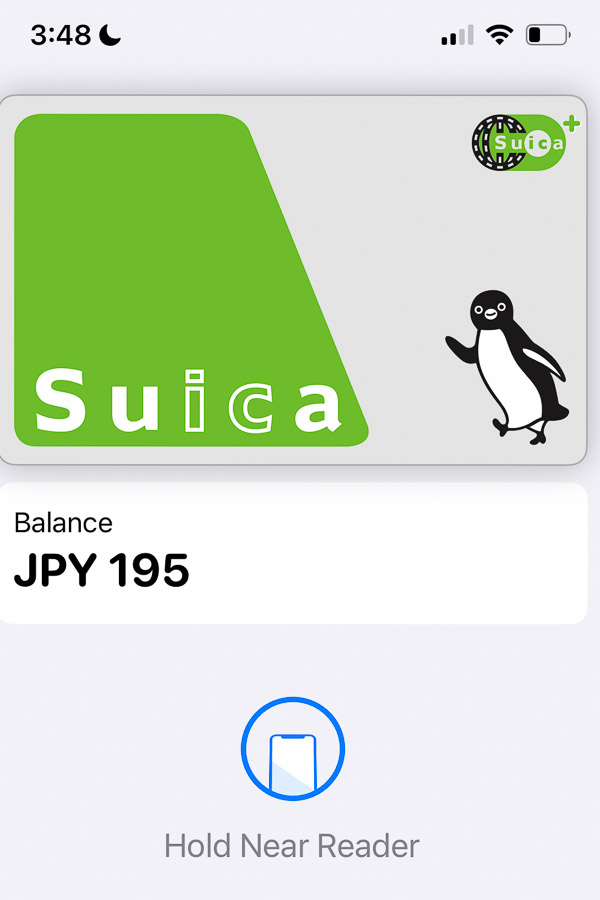
Car Hire
For this itinerary (and most Japan itineraries), hiring a car is not necessary or recommended in most towns due to limited parking and traffic.
The one place where I would recommend hiring a car is in the Fuji Five Lakes area. This was my first time hiring a car in Japan, but it was worth it for us to explore more of the Fuji Five Lakes area, beyond Lake Kawaguchiko where we were staying. As the area isn’t as built up as in the cities, we found driving around not too stressful, and would recommend it to others.
Map – 4 Weeks in Japan by Region
How Much Does it Cost to Spend 1 Month in Japan
I’ve crunched the numbers, and our 4 weeks in Japan ended up costing us a grand total of AUD $8,500 for two people.
This equates to AUD $315 per day for two people. With exchange rates as at January 2025, this equates to approximately USD $195 / €190 for a couple, per day.
This includes all expenses, except for flights and travel insurance.
The breakdown for this is as follows:
| Category | Cost for 2 people per day (AUD) |
| Accommodation | $120 |
| Food & Drinks | $109 |
| Transport | $43 |
| Activities | $14 |
| Shopping | $12 |
| Miscellaneous (luggage storage, laundry etc) | $3 |
| Car Rental | $9 |
| eSIM | $3 |
| Total | $313 |
I’ve gone into more detailed analysis of what we spent in each of these categories in my Japan Trip Cost Breakdown here, however accommodation was our largest expense at 40% of our daily cost.
We stayed mostly in basic Japanese business hotels and guesthouses which were very clean and comfortable. We had a few splurge stays, like a one-night ryokan stay in Atami Onsen.
Accommodation prices may vary depending on the time of year. As we were visiting during cherry blossom season in April 2023, prices may have been higher than average.
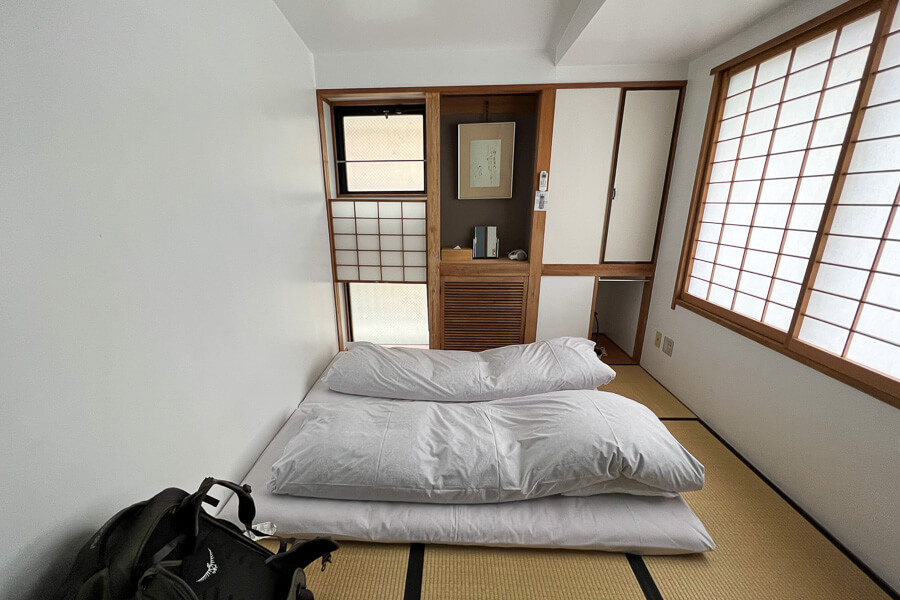
Dining out in Japan is fairly cheap, at least for me when compared to Australia.
We did eat out a lot, and trying all the delicious food is a large part of why we love Japan so much. This is reflected in our food and drink costs, as dining out is an activity in itself for us (perhaps also why the activities category is relatively low).
We drank alcohol almost every day, and definitely indulged in quite a few sake-tasting experiences along the way.
In summary, use this as a general guide to help plan your Japan budget.
Japan Itinerary: Week by Week Breakdown
Week 1 | Days 1-5: Tokyo
You’ve arrived in Tokyo! Get ready to be immersed in the neon lights, busy sidewalks, hidden alleyways and all the fun things that await in Tokyo.
Things to Do & See
There is honestly so much to do and see in Tokyo – I’ve been five times and still find something new and interesting each time. In fact, you could easily spend a week in Tokyo and still not tire of things to do and see!
Below are some of my top things to do around Tokyo.
- Explore the neon-lit streets of Shinjuku and play video games at a gaming arcade
- Wander the quirky streets of Harajuku and visit the Meiji Jingu shrine
- Visit the iconic Shibuya crossing and watch the scramble. Best seen from above at Shibuya Sky (an awesome sunset spot with 360-degree panoramic views of Tokyo!)
- Go thrift shopping in Shimokitazawa
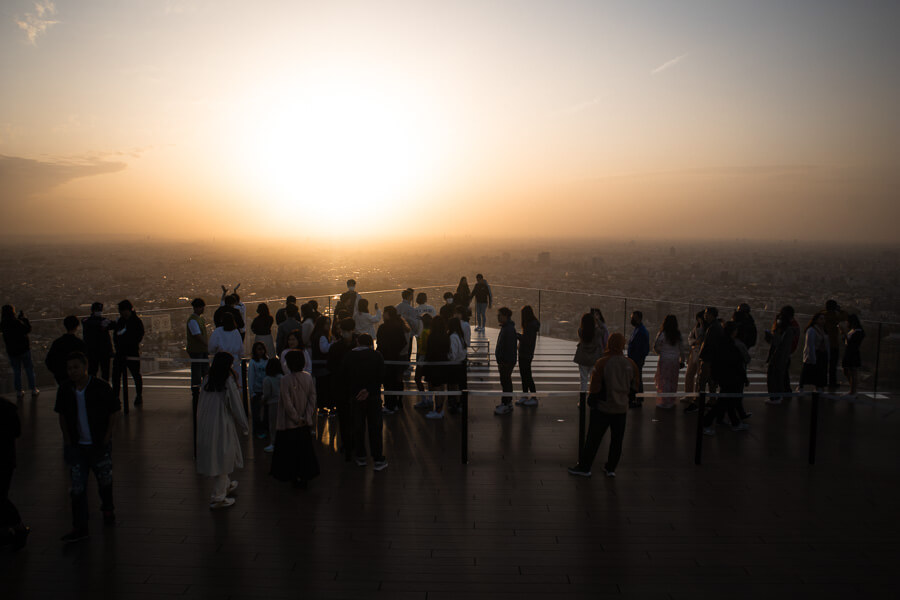
- Sample local food at the Tsukiji Fish Market. Wander the market yourself on a self-guided exploration or join a guided foodie walking tour
- Be amazed at the TeamLab Planets immersive museum – make sure to purchase tickets at least a few days in advance! In 2024, the TeamLab Borderless exhibit re-opened in Azabudai Hills, so you have two options in Tokyo now.
- Marvel at the hundreds of lucky cats at Gotokuji Temple (free entry!)
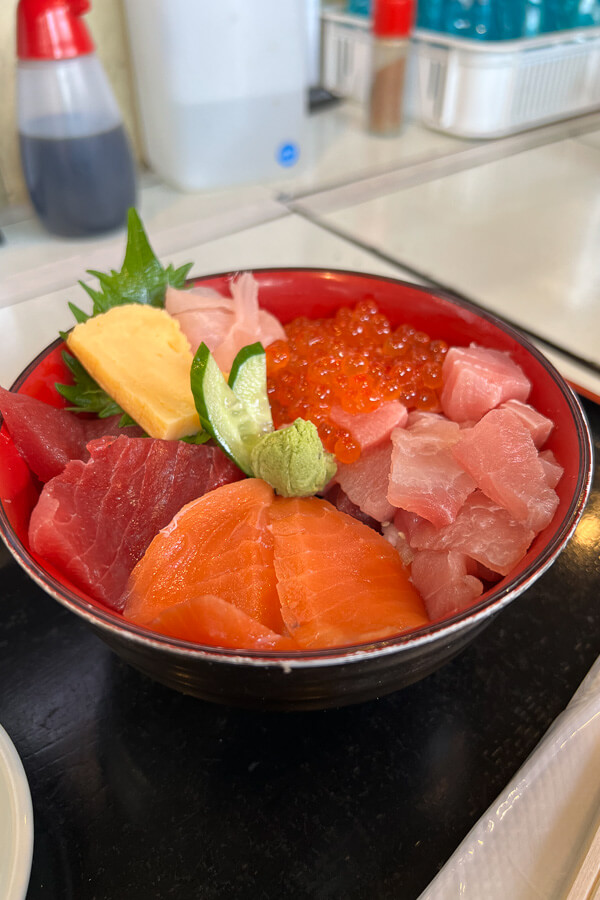
- Explore the pulsing Akihabara electric town, shopping for all things anime, manga and electronics
- Visit some of Tokyo’s temples and shrines, including Senso-ji and Hie Shrine
- Shop away at Don Quijote, the huge mega discount store which stocks everything from snacks, cosmetics, alcohol, gadgets and everything in between
- Spend a fun day at Disneyland or DisneySea
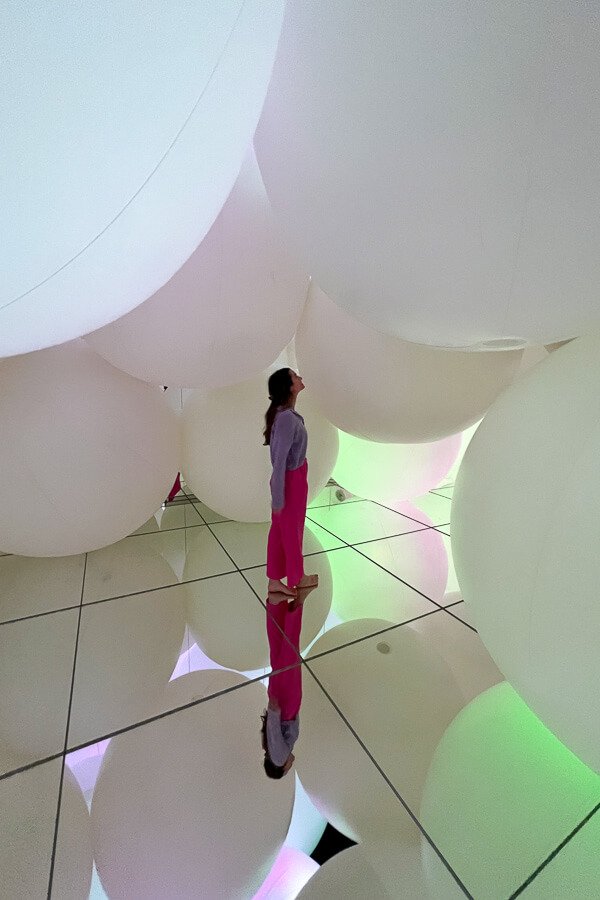
Trust me when I say you won’t ever be left wanting for good food options in Tokyo. I could have an entire blog dedicated to eating in Tokyo, but here are some of my favourites:
Where to Eat
- Uogashi Nihon-Ichi: a small and popular standing sushi restaurant in Shinjuku
- Harajuku Gyozaro: a tasty gyoza restaurant in Harajuku
- Gyukatsu Motomura (various locations): the most delicious katsu you will ever eat

- Fuunji Shinjuku: tsukemen dipping noodles
- Kikanbo Ramen: My favourite ramen spot in all of Japan – the chashu melts in your mouth!
- Ramen Hayshida: popular ramen joint in Shinjuku
- Darumasakaba Izakaya Kanda: a friendly local izakaya (we were the only foreigners here!)
Watch my video below which features Kikanbo, Standing Sushi and Gyukatsu Motomura.
Where to Stay
I generally recommend staying in the west of Tokyo (near Shinjuku) or east (near Tokyo Station). As long as you are close to a subway station on the main lines, you generally can’t go wrong.
- Budget – Kimi Ryokan Ikebukuro: my go-to budget option every time I’m in Tokyo. It’s about a 10-minute walk from Ikebukuro Station and features traditional tatami mat rooms with clean, shared bathrooms.
- Mid-Range – Via Inn Prime Nihonbashi Ningyocho: I was pleasantly surprised by the size of the rooms in this new, modern hotel. The location was within walking distance to two different subway lines.
- Luxury – The Prince Park Tower Tokyo: Wake up to a view of the iconic Tokyo Tower outside your window at the luxe Prince Park hotel!
Week 1 | Days 5-8: Fuji Five Lakes
After a few fun-filled days in Tokyo, it’s time to leave the city and explore the Fuji Five Lakes area nestled near the base of Mount Fuji.
I found it easiest to get the direct Highway bus from Tokyo Station to Kawaguchiko as its faster and cheaper, otherwise, you can catch the train which generally requires at least one transfer. A bus also departs from Shinjuku Station to Kawaguchiko – read more about getting to Fuji Five Lakes in my 3 day itinerary.
As the name suggests, this area comprises five lakes: Kawaguchiko, Saiko, Yamanakako, Shojiko, and Motosuko. These lakes offer stunning views of Mount Fuji, especially from the northern shores of Kawaguchiko and the eastern end of Yamanakako.

A visit to Fuji Five Lakes offers a change of pace from the bustling city life of Tokyo: it is a popular destination for camping, hiking and hot spring bathing. And of course, iconic views of Mount Fuji.
It is a popular day trip destination from Tokyo, but I recommend spending a few days to immerse yourself in exploring some of the incredible things to do and see in the area.
Best Time to See Mount Fuji
The best time to visit for clear views of Mount Fuji is between November to April. Otherwise, clouds may obstruct your views.
During our four days in Fuji Five Lakes in April, we had clear views for three of those. One morning we woke up and we couldn’t even see Mount Fuji as it was heavily obscured by clouds.
Things to Do & See
- Take the Mt. Fuji Panoramic Ropeway to an Observation Deck with sweeping views of Mt Fuji and Lake Kawaguchi.
- Walk, cycle or drive around Lake Kawaguchi and admire the different viewpoints of Mt Fuji
- Stroll along the picturesque lakeside park at Oishi Park
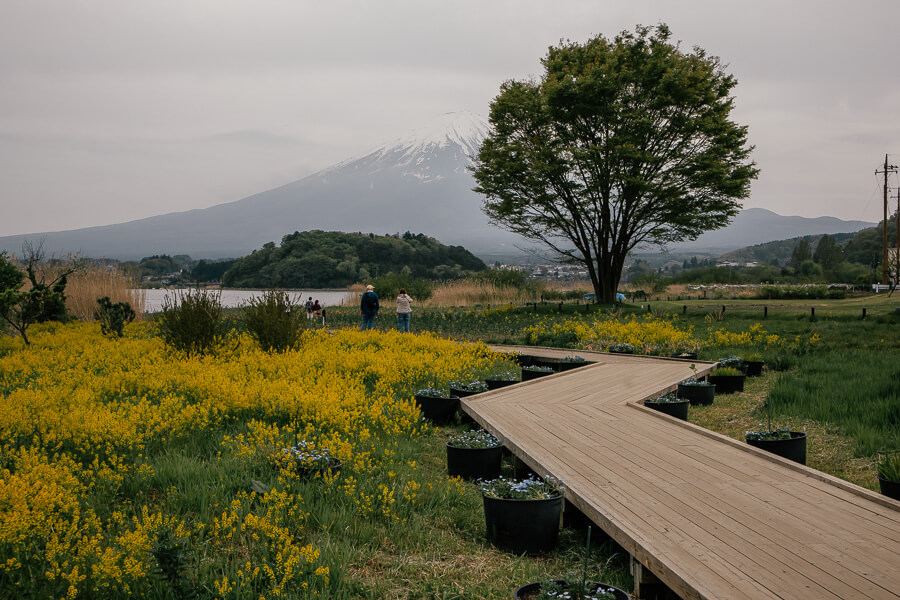
- Head underground and explore the Narusawa Ice Cave or the Fugaku Wind Cave
- Visit the iconic and picturesque Chureito Pagoda
- Wander through the forest at Kitaguchi Hongu Fuji Sengen Shrine
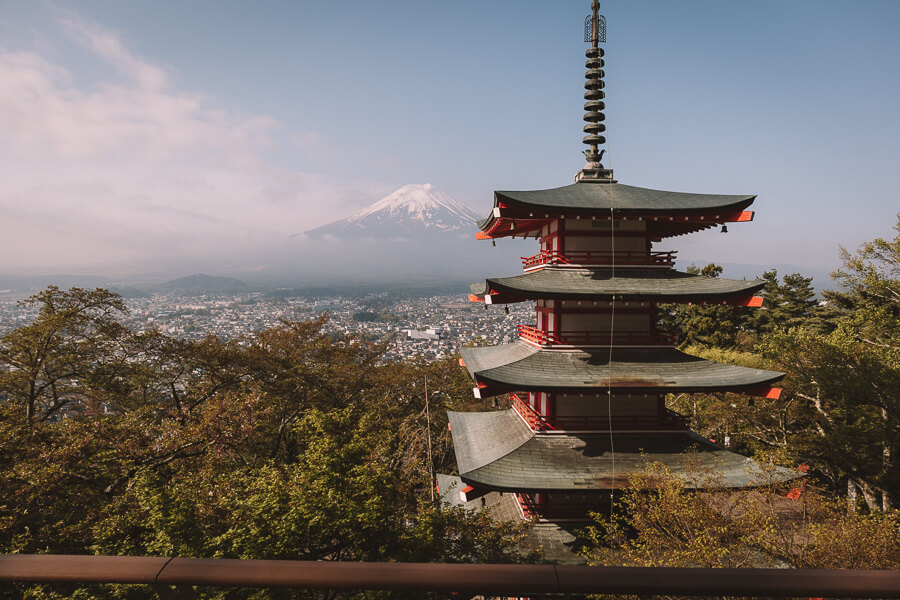
- Visit the Kawaguchiko Music Forest Museum, a European-inspired garden with an antique music box museum
- Sample sake at the family run Ide Sake Brewery (we picked up our favourite Japanese souvenir here, a glazed sake set!)
Check out more things to do in Mount Fuji here!
Where to Eat
- Tanpopo: Family-run izakaya where the wife speaks to you via a hand-held translator – it was the most memorable and unique dining experience! Bookings are required, which our hostel organised.
- Kosaku: A busy restaurant serving the regional specialty, Houtou noodles. Word of warning, the seating is traditional tatami mat style so wear stretchy clothes!
- FabCafe Fuji: A great coffee spot after a visit to the nearby Chureito Pagoda
- Ramen Kaneyuki: One of the few ramen restaurants in the middle of town. Meals are served in this casual, open-air restaurant out of a food truck.
- Nagasaki Coffee Roaster: One of the best hand-drip coffees we had during our month in Japan! Located a few minutes from the Kawaguchi Asama Shrine.

Where to Stay
I recommend basing yourself in the town of Kawaguchiko for your time in Fuji Five Lakes. It has the most accommodation options and things to do. You can explore the other four lakes by local bus, but we chose to hire a car in Kawaguchiko to get around the region.
- Budget – Hostel Michikusa: this small, family-run guest house was wonderful. We booked the private tatami mat triple room with a Mount Fuji view. It was incredible waking up to see Mount Fuji each morning. There is a small common area and modern, clean shared bathrooms.
- Mid-Range – Fuji View Hotel: Overlooking Lake Kawaguchi, this hotel is surrounded by Japanese gardens and has a public onsen (hot spring bath).
- Luxury – La Vista: A short walk from the lake, this hotel offers rooms with clear views across to Mount Fuji plus a sauna, hot tub and onsen hot spring bath.
Explore all accommodation options in Kawaguchiko
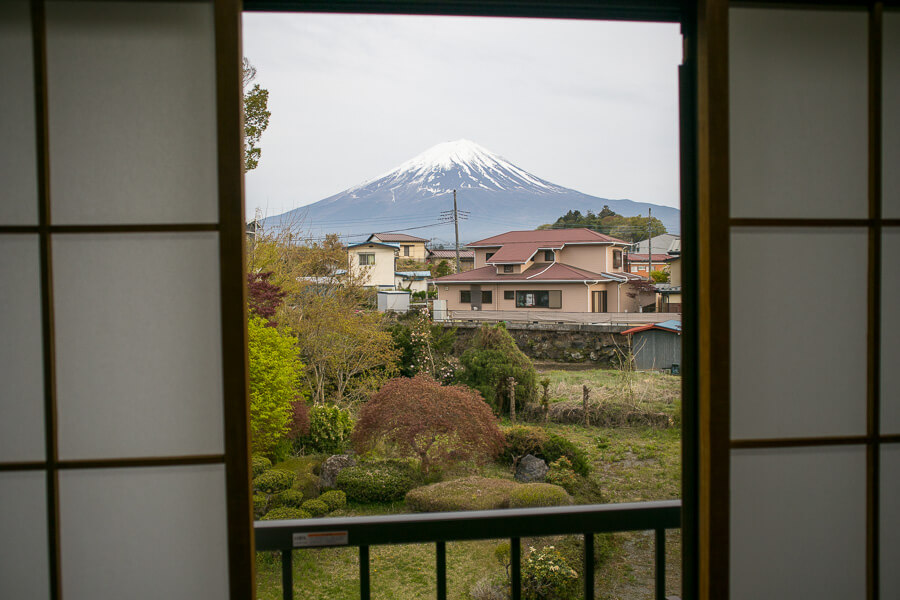
Week 2 | Days 8-11: Osaka
Welcome to the over-the-top sensations, smells and sights of the food capital of Japan!
Spend the next 4 days immersing yourself in the main attractions of Osaka. One whole day will be spent at Universal Studios Japan, just make sure to purchase your tickets in advance!
Things to Do & See
- Admire the metropolitan spread from the top of the Umeda Sky Building
- Stroll the majestic Osaka Castle Park grounds and head to the very top of the Osaka Castle (you can buy skip-the-line tickets here!)
- Browse the shops at the undercover Shinsaibashi Suji Shopping Street
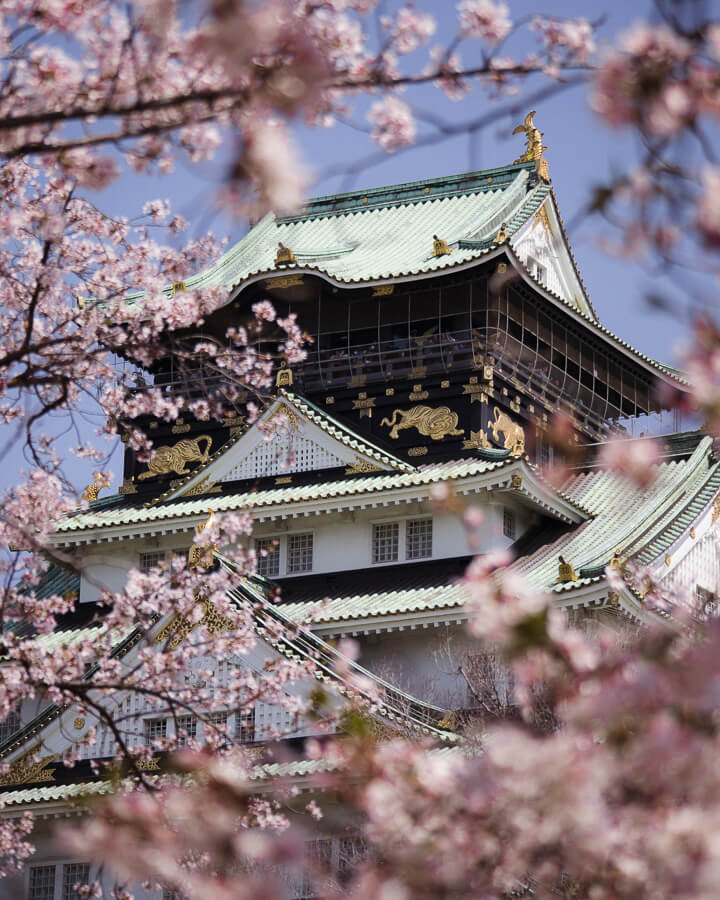
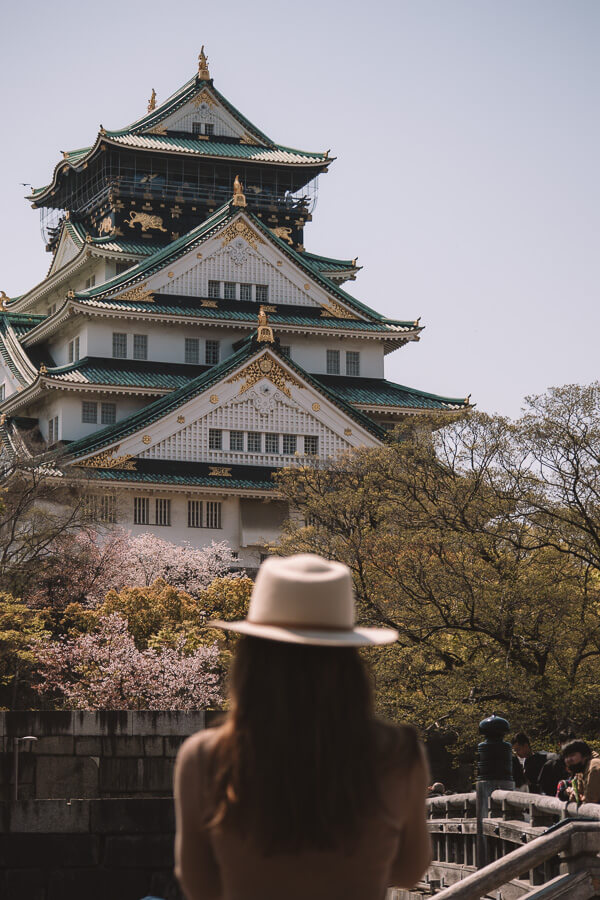
- Play video games in a bar at the Retro Bar Space Station
- Wander the hip streets of Amerikamura
- Immerse yourself in nature on a short day trip to the picturesque Katsuo-ji Temple (home to thousands of daruma dolls!)
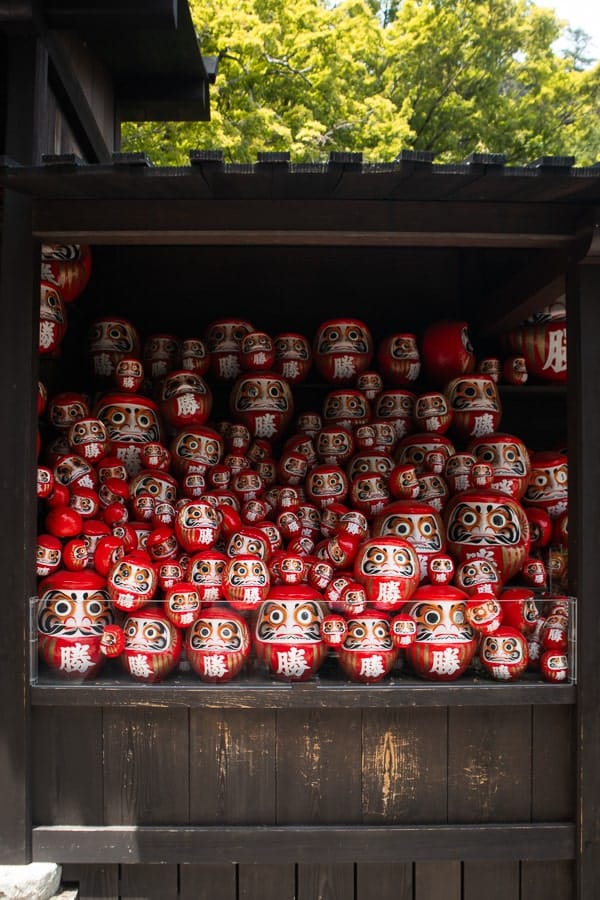
- Explore Nipponbashi DenDen Town (Osaka’s version of Akhihabara)
- Spend a day at Universal Studios Japan
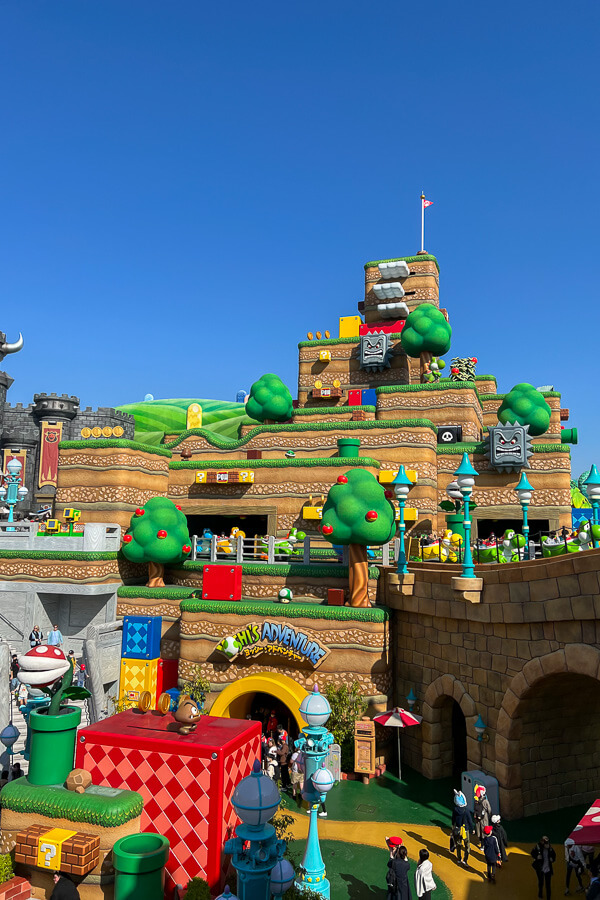
- Sample the local street food of Osaka along Dotonbori, including takoyaki (fried octopus balls) and okonomiyaki (savoury pancake), or eat your way through the Kuromon Ichiba Market
- Visit the unique lion’s head shrine at Namba Yasaka Jinja
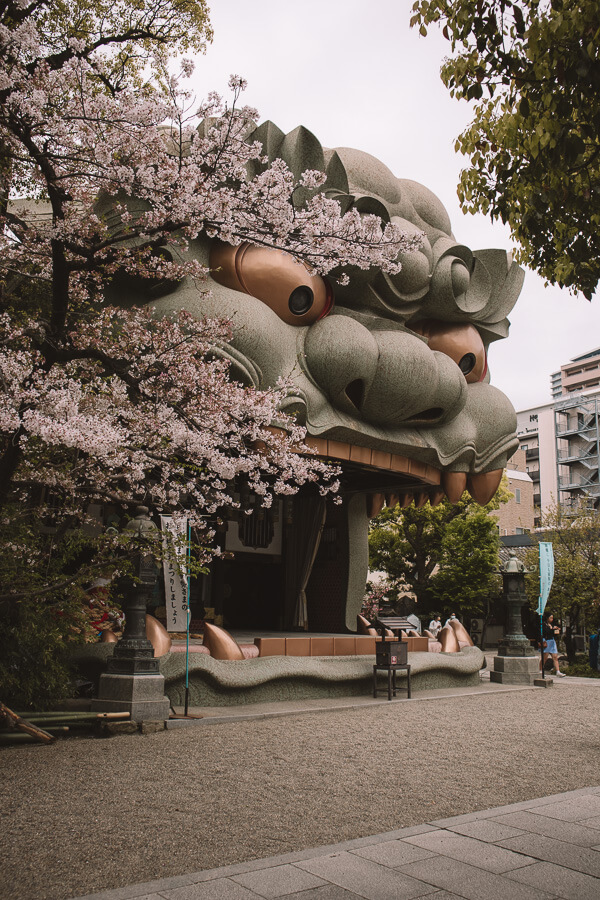
Where to Eat
- Ajinoya Honten: A popular okonomiyaki restaurant near the Dotonbori Glico Running Man sign
- Ikkaku Shinsaibashi: the juiciest chicken you’ll ever eat, washed down with beers and pickles
- Sake Bar Shiki: we had a blast at this tucked-away upstairs sake bar, trying a range of different sakes served by the friendly owner
- Kuishinbo: A hole-in-the-wall local okonomiyaki joint where the pancakes are served on the grill in front of you
For an easy-to-follow day-by-day itinerary in Osaka, check out my detailed Osaka guide here.
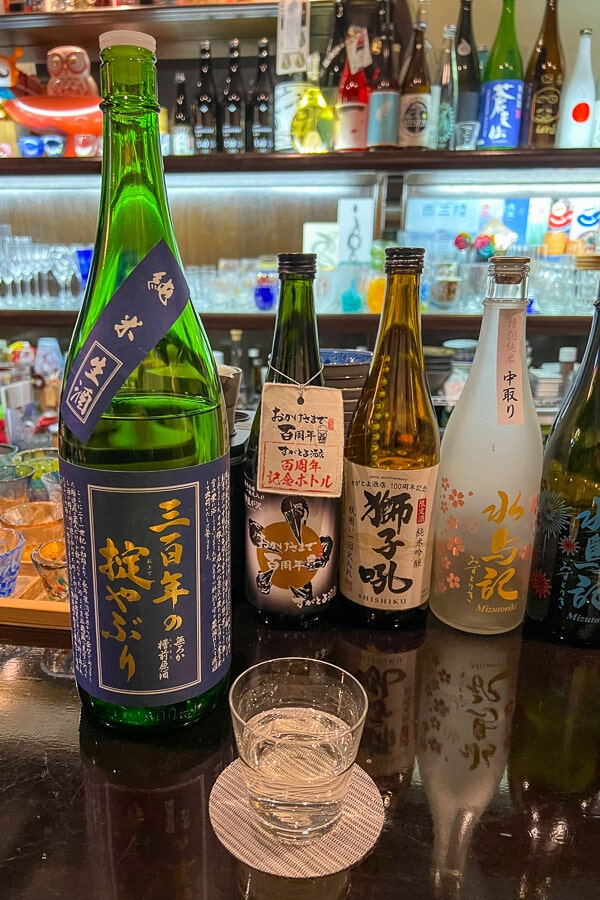
Where to Stay
Most tourist guidebooks will tell you to stay near the centre of nightlife near Dotonbori.
After a few stays in the area, my preference these days is in favour of staying a few stops away on the subway line to escape the crowds that the area is known for. However, if you want the most atmosphere on your doorstep, then Dotonbori is a great choice!
- Budget – Hotel Sobial: I stayed in this modern hotel with clean and compact rooms, a 2-minute walk from Daikokucho Station, only one stop from Namba station and the Dotonbori area.
- Mid-Range – Cross Hotel: just a 3-minute walk from the Namba Subway Station, this hotel is in the middle of the action. The rooms are modern and spacious (for Japan’s standards) and offer an inner-city escape from the bustle of Dotonbori.
- Luxury – Swissotel Nankai Osaka: We had a delightful one-night stay here. You can access the hotel lobby directly from inside Namba Station. The rooms are spacious and light-filled, and facilities include an indoor swimming pool, sauna and hot tub.
Explore all accommodation options in Osaka
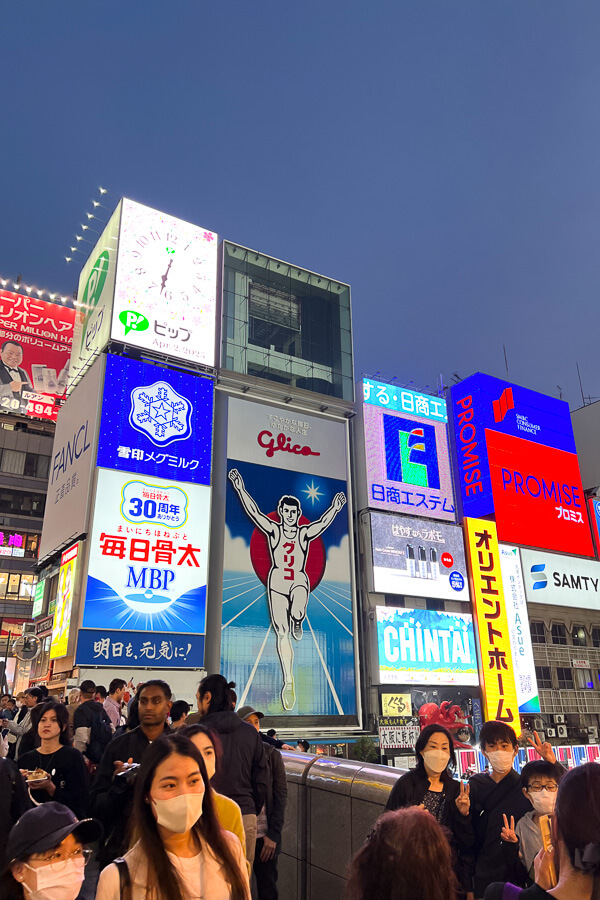
Week 2 | Days 11-12: Koyasan
An overnight stay in the tiny mountain top town of Koyasan is one of the most unique things you can do in Japan. It wasn’t until my fifth and most recent trip that I even learned about Koyasan.
Koyasan (Mount Koya) is a sacred mountain and the founding centre of Shingon Buddhism in Japan. Founded in the 9th century by the monk Kobo Daishi, it is a tranquil and spiritual place, with over 100 temples surrounded by thick forests.
It is here that you can experience a stay in temple lodging, run by Buddhists.
A temple stay usually includes a morning prayer ritual and traditional tatami mat bedding. All food is either vegan or vegetarian Buddhist cuisine (shojin ryori). Some temple stays also offer a fire show.
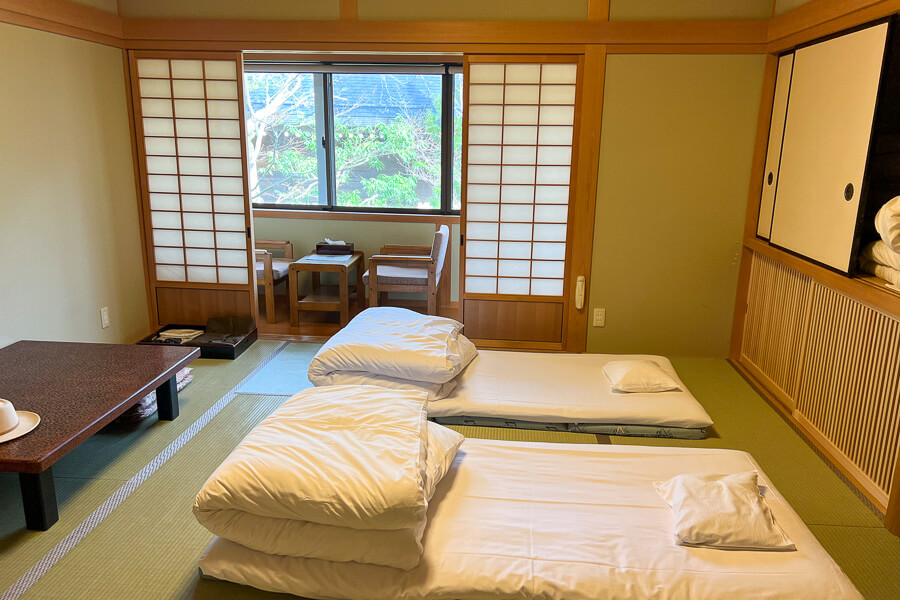
Getting to Koyasan from Osaka involves a scenic train ride out of Osaka before catching a cable car up the mountain, and another bus ride to the main town. Don’t be deterred, it’s quite easy and a very scenic journey!
I recommend leaving your bags at your hotel in Osaka, or in a locker for the next day, and pack a light overnight bag as there isn’t much room for large suitcases on the cable car and bus.
Things to Do & See
- Daimon Gate: 11th-century gateway entrance to Mt Koya
- Kongobuji Kompon Daito: the Grand Central Pagoda located in a serene garden
- Kongobu-ji: This historic temple is the headquarters of Shingon Buddhism, and features Japan’s largest rock garden
- Okunoin Cemetery: It was a surreal experience wandering through the forest that is home to Japan’s largest cemetery. You pass through over 200,000 tombstones on the way up the 2-kilometre stretch of path that leads to the Torodo Hall and the final resting place of Kobo-Daishi.
- Torodo Lantern Hall: The main hall of worship, built in front of Kobo Daishi’s mausoleum. There are over 10,000 lit lanterns in the hall.

Where to Stay
There are many highly-rated temple stays that are easily bookable through booking.com.
Unfortunately, as I was booking last minute during a popular time of the year (April), I couldn’t stay at one of these. I ended up finding a room available at Henjoko-in Temple, but I would only recommend it if the other ones aren’t available.
If you are on a budget, there is non-temple stay accommodation in the form of simple guesthouses, however, if you are making the trip to Koyasan I highly recommend spending one night in a temple to get the full experience. Read more about what to expect in my Koyasan temple stay guide.
Both breakfast and dinner are included as part of a temple stay (so factor this into the cost).
Recommended Temple Lodging:
- Ekoin Temple
- Saizenin Temple
- Yochi-in Temple (one of the cheaper temple stays)
Budget Guesthouse Accommodation:
Week 2 | Days 12-14: Osaka (day trips to Nara, Himeji and Kobe)
// Quick note: the reason I split our time in Osaka into two blocks was to break up the travel day back from Koyasan. To go directly from Koyasan to Hiroshima would be a very long travel day of 4.5 hours and involves changing buses/trains at least 4 times which I wasn’t that keen on.
Instead, consider breaking the journey up by returning to Osaka for another couple of nights, before continuing your travels to Hiroshima. //
Begin the 3-hour journey back to Osaka from Koyasan. I used Osaka as my base for the next few days to do a combined day trip to Himeji and Kobe.
Himeji Castle
It takes around 90 minutes to reach Himeji from Osaka. The main reason for our visit to Himeji was to explore the remarkable Himeji Castle.
Himeji Castle is known as White Heron Castle due to its elegant, white facade.
It is a UNESCO World Heritage site and one of Japan’s most famous and beautiful surviving feudal castles. The castle is a prime example of traditional Japanese castle architecture, dating back to the early 17th century.
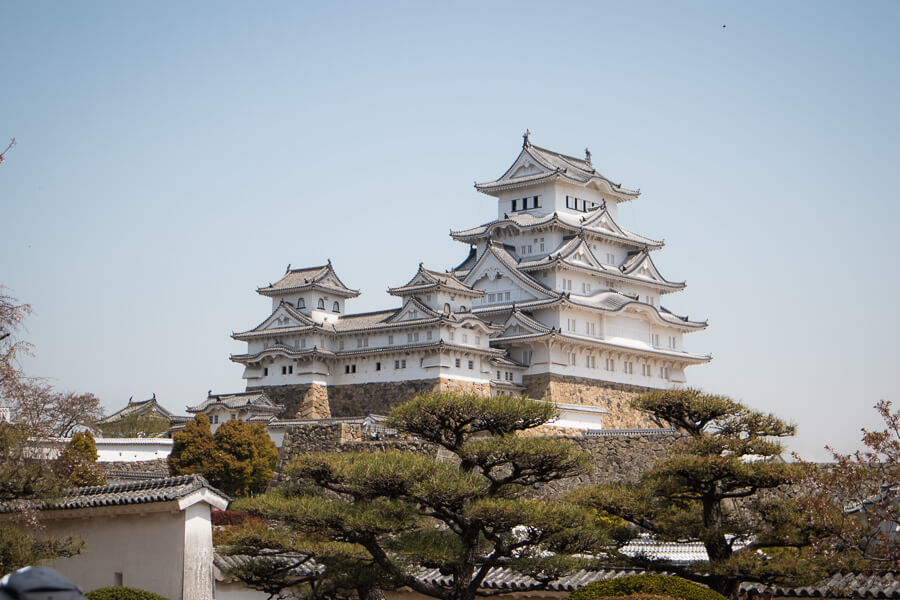
Over its years, it has survived wars, earthquakes, and the passage of time, remaining intact through the centuries. The castle is renowned for its imposing size, intricate defence mechanisms, and well-preserved complex, including the maze-like paths leading up to the main keep.
You can explore the full expanse of the castle grounds, as well as the interior of the castle. It is possible to climb to the very top floor, for a panoramic view across Himeji.
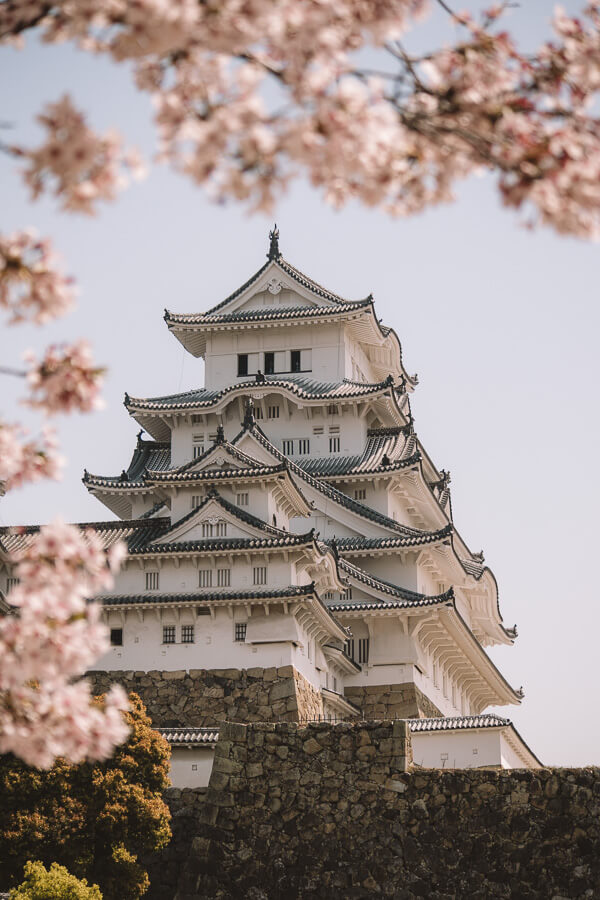
Kobe
From Himeji Castle, we walked back to Himeji Station and caught a train that was stopping in Kobe. We came here for one sole reason, and that was to finally sample the famous Kobe Wagyu beef for ourselves!
You could easily spend a day or two exploring Kobe, however, we only had one afternoon.
We decided to spend our afternoon exploring the Kobe Herb Gardens, which involved catching a scenic cable car to the top of a mountain and viewing Kobe and the harbour sprawled out below.

After wandering through the expanse of gardens, instead of catching the cable car back down to the city, we decided to hike down so we could stop at the picturesque Nunobiki Waterfall on the way (I dare say, a bit of a hidden gem we randomly spotted on Google Maps!).
After working up an appetite, we chose to try the famous Kobe beef for dinner at Steakland Kobe before jumping on the train back to Osaka (50 minutes).
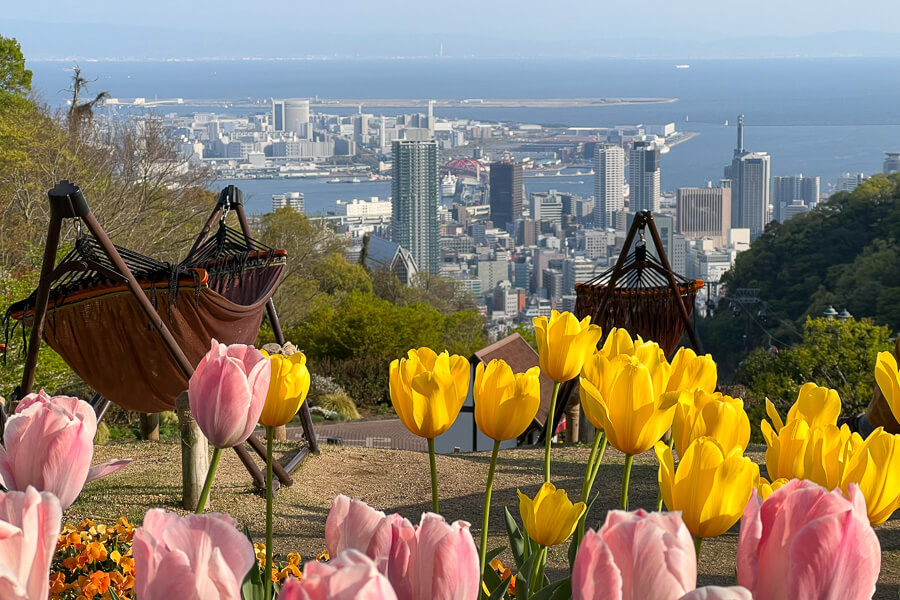
Nara
If time and energy levels allow, consider spending a day exploring the ancient city of Nara, which is only 45 minutes from Osaka.
I visited Nara on my very first trip to Japan in 2013. Of course, Nara is most well-known for its free-roaming deer that frequent the beautiful parks and historic temples. It’s quite touristy, but I think it’s worth going at least once!
The other main attraction in Nara is the massive bronze Great Buddha in Todai-ji Temple, which is a UNESCO World Heritage Site.
You can feed the deer special “deer biscuits” at Nara Park, visit the Kasuga-Taisha Shrine with its lantern-lined paths, and stop by the Nara National Museum which offers insights into Japanese Buddhist art.
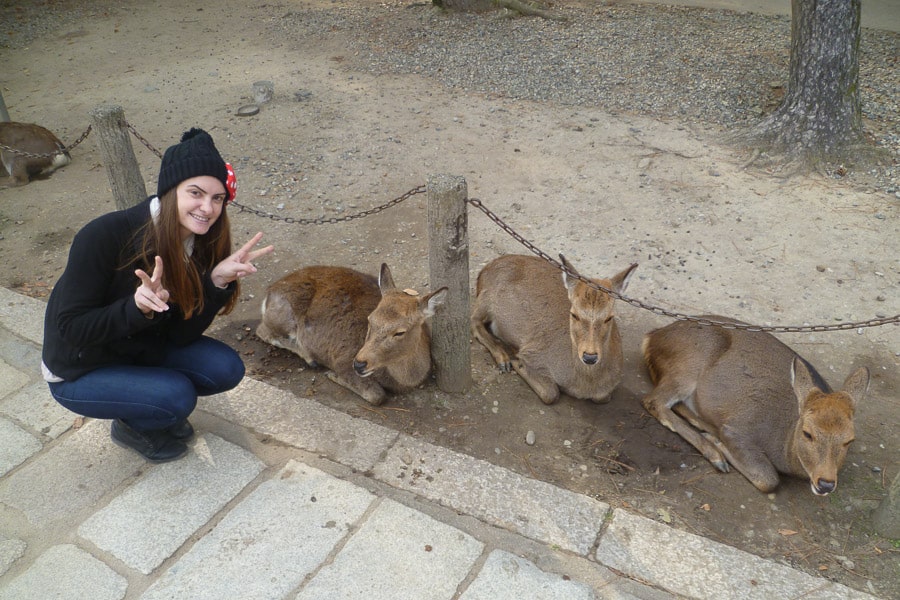
Week 3 | Days 14-16: Hiroshima & Miyajima
For the next stage of your Japan one month itinerary, we are heading 2 hours west of Osaka to explore Hiroshima and the small island of Miyajima.
Hiroshima
A visit to Hiroshima is a sobering and impactful experience.
Most of my time in Hiroshima was spent exploring the Hiroshima Peace Memorial Park. It is here you’ll find the Atomic Bomb Dome and learn more about the horrific events during World War II at the Peace Memorial Museum.
Make sure to try the Hiroshima okonomiyaki, which has a distinct texture compared to okinomiyaki in Osaka.
Other things to do in Hiroshima include visiting the Shukkeien Garden and Hiroshima Castle. Museum and art lovers may choose to spend some time at the Mazda Museum or Hiroshima Modern Art Museum.

Where to Stay
- Budget – WeBase: Walking distance from the Peace Memorial Park, this hotel offers a shared lounge and kitchen space for travellers on a budget. The compact rooms are clean and comfortable.
- Mid-Range – The Knot: This modern, trendy hotel is in the perfect location for visiting Memorial Park and catching the ferry across to Miyajima. There’s also a rooftop bar that serves tasty cocktails with an amazing view. A great base for exploring Hiroshima.
- Luxury – Hilton Hiroshima: Close to the main tourist attractions, this five-star hotel offers spacious rooms in a luxury setting.
Explore all accommodation options in Hiroshima
You can choose to spend the night in Hiroshima or spend an extra night on Miyajima Island to give you a full day of exploring the island.
Miyajima
From Hiroshima, catch the ferry to Miyajima Island.
Miyajima is a popular island for day trippers, who come to visit the famous Itsukushima Shrine and its “floating” torii gate in the water.
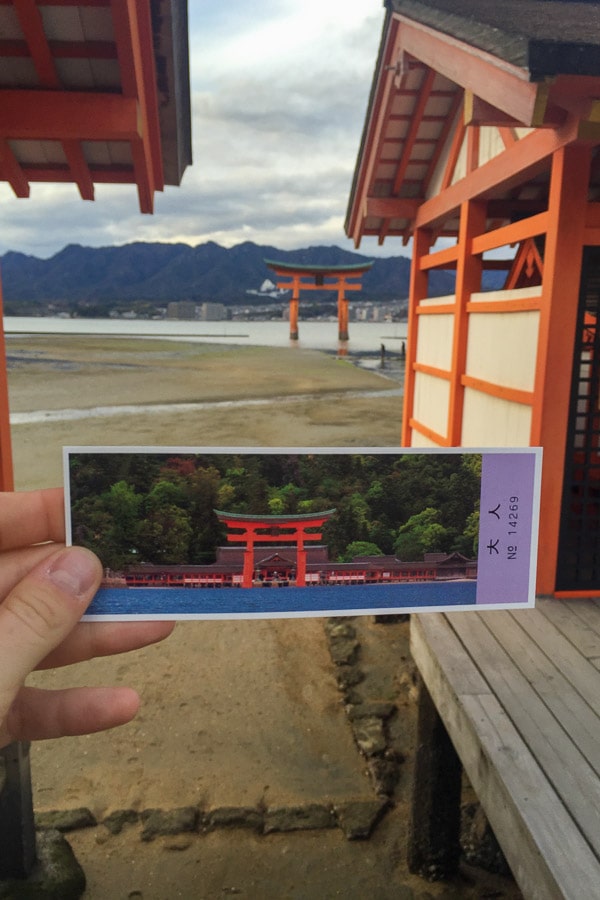
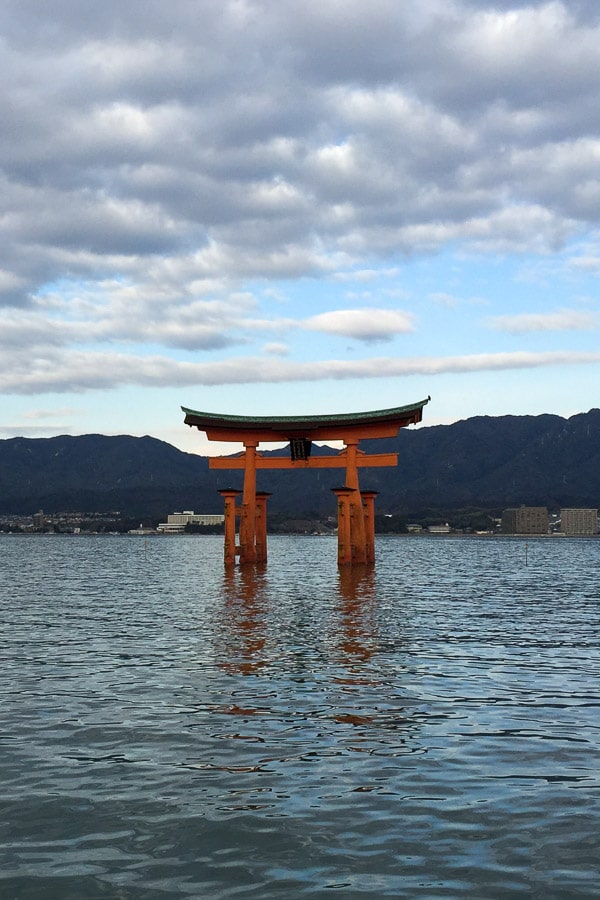
I think Miyajima is best explored with a one or two-night stay on the island and so we chose to immerse ourselves in a ryokan stay experience as a bit of a splurge.
Things to do in Miyajima include strolling through the Omotesando Shopping Street, visiting the Senjokaku Pavilion and Five-Storied Pagoda and exploring Momijidani Park. Like in Nara, free-roaming deer can be found in the main street of the island.
On our last day in Miyajima, we ventured to Daishoin temple at the base of Mount Misen, which has hundreds of carved stone statues with knitted hats. Unlike some of the other nearby shrines and temples, this one was very peaceful and serene.

Afterwards, we continued the trail past Daishoin to hike Mt Misen, the highest peak on the island.
From the vantage top of the large boulders, you can get almost complete 360-degree views across the island and ocean. From here, we could catch the Miyajima ropeway back down the mountain and make our way back to the Miyajima Ferry terminal to depart the island.
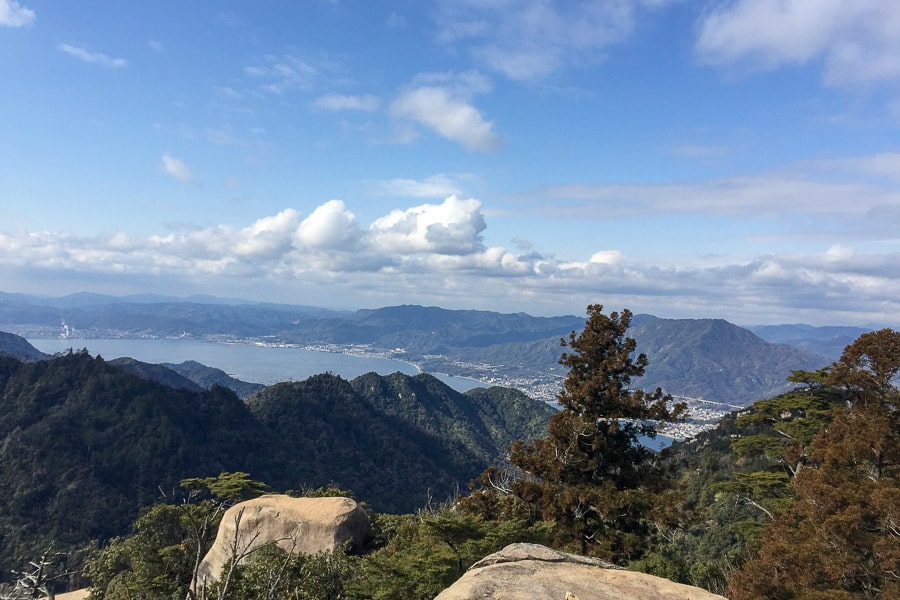
Where to Stay
- Budget – Sakuraya: Affordable Japanese-style rooms with shared bathroom facilities.
- Mid-Range – Miyajima Hotel Makoto: An older Japanese-style traditional hotel that offers a shuttle service from the ferry terminal
- Luxury – Jukeiso Ryokan: Traditional Japanese-style rooms overlooking the torii gate of the Itsukushima Shrine. This ryokan has a public indoor onsen, as well as a private outdoor onsen overlooking the shrine. Yukata robes and ocha (green tea) are provided. I recommend booking the package with dinner and breakfast included for the full Ryokan-style experience.
Week 3 | Days 16-21: Kyoto
It’s time to explore Kyoto, the cultural capital of Japan.
The city has preserved its ancient history with many traditional temples, shrines and classical gardens. As Kyoto escaped extensive bombings in the war, it’s been able to retain much of its old-world charm, particularly in areas like the Gion district.
Much of your time in Kyoto will be spent exploring many of the 2,000 temples and shrines that draw tourists across the world to visit Kyoto.
There’s so much to see and do, it can feel a bit overwhelming! Here’s a summary below, or read my dedicated Kyoto itinerary for more detail.
Things to Do & See
These are Kyoto’s most popular (and therefore, busiest) tourist attractions that you should visit at least once:
- Stroll the thousand vermilion gates of Fushimi Inari
- Visit Nanzen-ji temple and walk along the riverside Philosophers Path to Ginkaku-ji
- Explore Ginkaku-ji (silver pavilion temple) and Kinkaku-ji (golden pavilion temple)
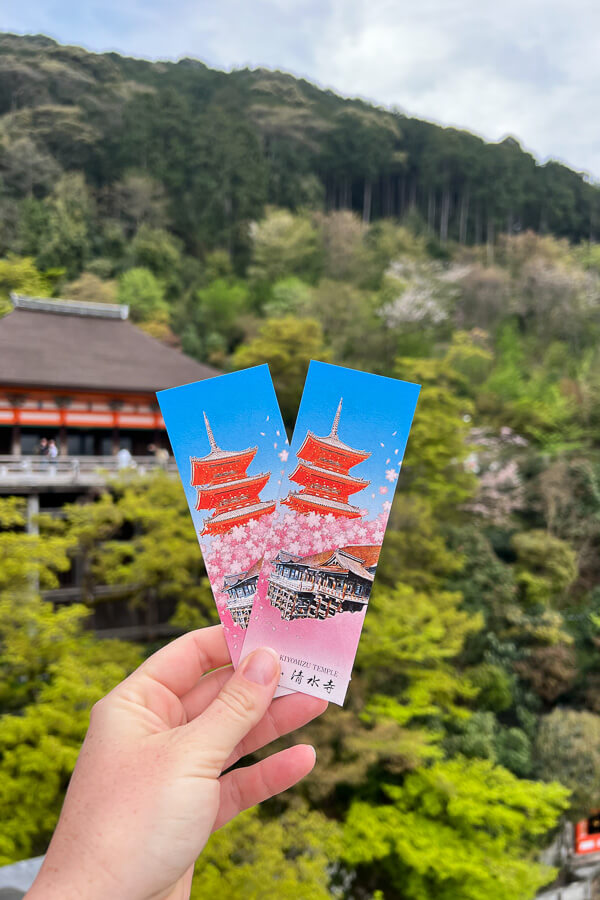
- Wander the preserved streets of Ninenzaka and Sannenzaka before visiting Kiyomizudera, one of Japan’s most celebrated temples
- Head to the Yasaka-jinja Shrine and stroll the serene Maruyama Park

- Take an early morning trip to Arashiyama Bamboo Forest and head up to Monkey Park Iwatayama
- Try local street food at Nishiki Market
- Go for an evening stroll along Pontocho Alley and people watch
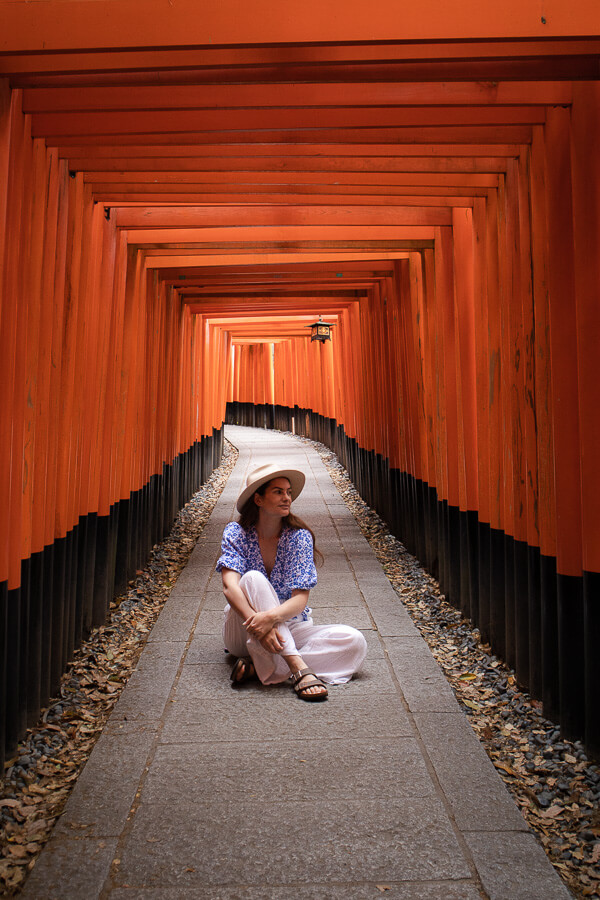
On our most recent trip to Kyoto, we tried to explore some lesser-known attractions that I hadn’t heard of before. Here are some suggestions:
- Marvel at the colourful ball shrine Yasaka Koshin-do
- Learn about sake at the Gekkeikan Okura Sake Museum in the Fushimi Sake District
- Skip the crowds in Arashiyama and explore the small bamboo grove at Kodai-ji Temple


Where to Eat
- Yakiniku Marutomi: great yakiniku restaurant near Pontocho
- Ramen Sugari: the trendiest ramen restaurant we have ever visited! Dining here was an experience in itself
- Menkui Kinya Tempura: delicious udon noodles (hot and cold) served with tempura
- Masuya Saketen Sake Bar: popular little sake bar with yummy snacks
- Ramen Uroko: next to our hostel was this friendly and tasty ramen shop
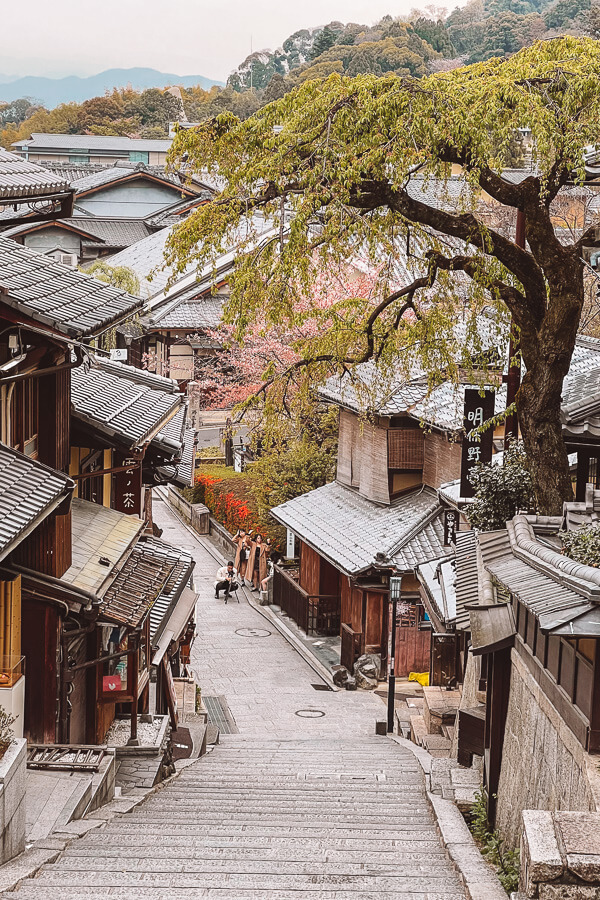
Where to Stay
- Budget – Piece Hostel Sanjo: Trendy modern hostel with a rooftop common area in a great spot near Nishiki Market. We stayed in a private room with a bathroom, there are also dorm rooms and private rooms with shared bathrooms.
- Mid-Range – Hotel Resol Kyoto Sanjo: Great central location with modern neutral decor and comfortable rooms.
- Luxury – Nohga Hotel Kiyomizu: I was in envy of my friends who stayed at this beautiful hotel. Highlights include a rooftop bar with fire pits, stylish decors and common areas plus an in-house bakery.
Explore all accommodation options in Kyoto
I’ve found accommodation in Kyoto is typically more expensive than that in Osaka and Tokyo, so budget accordingly.
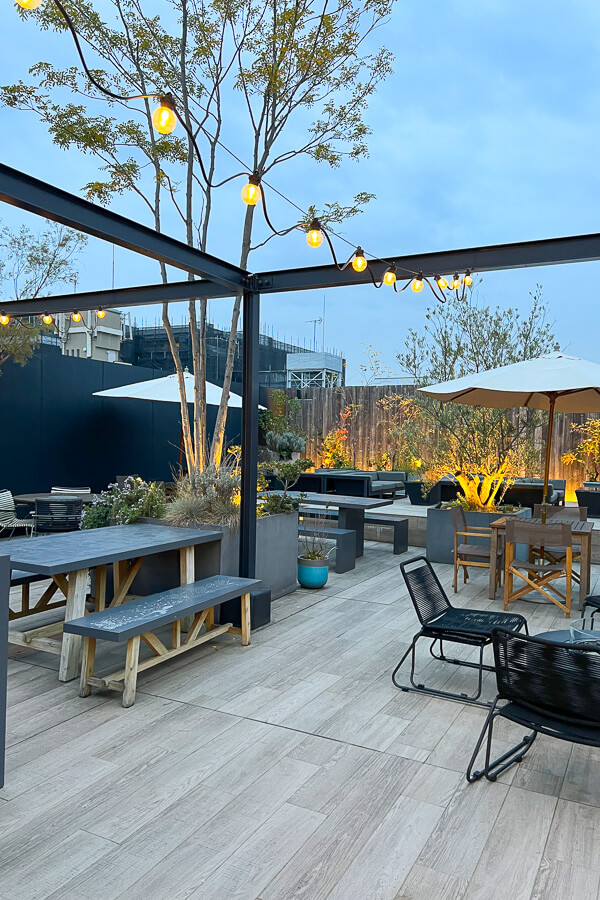
Week 4 | Days 21-27: Japanese Alps
I didn’t know much about the Japanese Alps town until I started researching somewhere new to visit on our most recent trip to Japan.
The three main cities and towns to explore in these areas are Kanazawa, Takayama and Matsumoto. They ended up being one of the highlights of our trip and offered a unique and somewhat lesser touristy side side of Japan.
Days 21-24: Kanazawa
From Kyoto, catch the Shinkansen for 2.5 hours to the western coast of Japan where you’ll spend the next 3 days exploring Kanazawa.
Kanazawa is known for its well-preserved Edo-era districts, remarkable gardens, fresh seafood and ties to samurai culture. Kanzawa is often referred to as “little Kyoto”, due to its preserved buildings and geisha districts.
To get around, you’ll rely on the public bus network. Alternatively, you could hire a bike or get around on foot as we found the city to be quite walkable.
Things to Do & See
- Omicho Market: this busy hub is Kanzawa’s largest fresh food market and features a lot of fresh seafood
- Higashi Chaya District: one of Kanazawa’s three geisha districts. The well-preserved streets with wooden buildings are bustling with many tea houses and shops selling famous gold-leaf products such as gold-leaf ice cream!
- Stroll the historic Nagamachi Samurai District where samurai families once lived, complete with preserved residences and museums

- The Kenroku-en Gardens draws visitors from across Japan – it is considered one of Japan’s most perfect gardens, covering over 11 hectares and renowned for its beauty across all seasons. Next to the Gardens, you’ll find the reconstructed Kanazawa Castle
- Myoryuji Ninja Temple: We joined a tour of the “ninja temple,” which wasn’t actually used by ninjas but features trap doors, hidden rooms and all kinds of ninja-like secrets. The tour was in Japanese but we were given English brochures with translations.
- Another wonderful example of the mix of new and old in Kanazawa is the 21st Century Museum of Contemporary Art. The building itself is a work of art with its unique circular design and art installations around the grounds.
- Oyama Shrine: A small shrine with a lovely small garden and tranquil pond (keep an eye out for the small frog statues!)

Where to Eat
- Kourin Sushi: Every night this small sushi restaurant was completely booked. Luckily we managed to get a reservation for our last night in Kanazawa so we could see what the hype was about!
- Kanazawa Shu Shu: A sake bar restaurant serving small dishes of local cuisine. We were served handpicked sake by the friendly owner.
- Ramen Uguisu: We unexpectedly had the BEST ramen of the trip here (and we had a LOT of ramen!).
Where to Stay
- Budget – Hotel Pacific Kanazawa: One of the larger rooms we had in Japan, this small boutique hotel is located above a cafe and has bicycles available for hire. Great location near Omicho Shrine and Kanazawa Castle.
- Mid-Range – Mitsui Garden Hotel Kanazawa: Trendy modern hotel with a public onsen and walking distance to the main attractions
- Luxury – Kanazawa Tokyu Hotel: Spacious, light-filled rooms near the Nagamachi Samurai district
Days 24-26: Takayama
From Kanazawa, catch the highway coach bus to Takayama. Advance bookings are recommended and can be made here.
Optionally, you can get off the bus at Shirakawago, famous for its thatched-roof houses and spend the day exploring the small village. There is luggage storage at the bus station to leave your bags. You would get a later bus connection from Shirakawago to Takayama.
Due to poor weather, we decided to stay on the bus and head directly to Kanazawa. We did visit the Hida Folk Village in Takayama which is an alternative spot to see and learn more about the traditional thatched houses.
Takayama is another small city nestled in the mountains that is famous for its well-preserved Edo-era streets. Takayama celebrates two festivals a year, in which spectacular floats traverse the streets of the city.
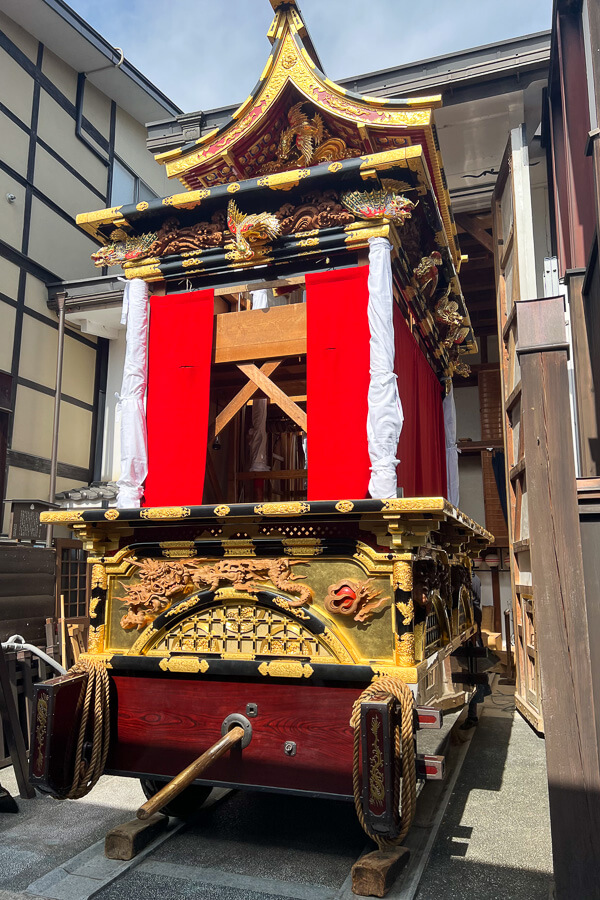
Unfortunately, we missed the spring Sanno Festival by one day, which our guesthouse owner told us about excitedly as he poured us a glass of leftover sake from the previous night’s celebration.
Despite missing the festival itself, we found it fascinating to see the floats stored around the town itself. Plus, you can usually visit some of the floats on display at the Takayama Festival Floats Exhibition Hall.
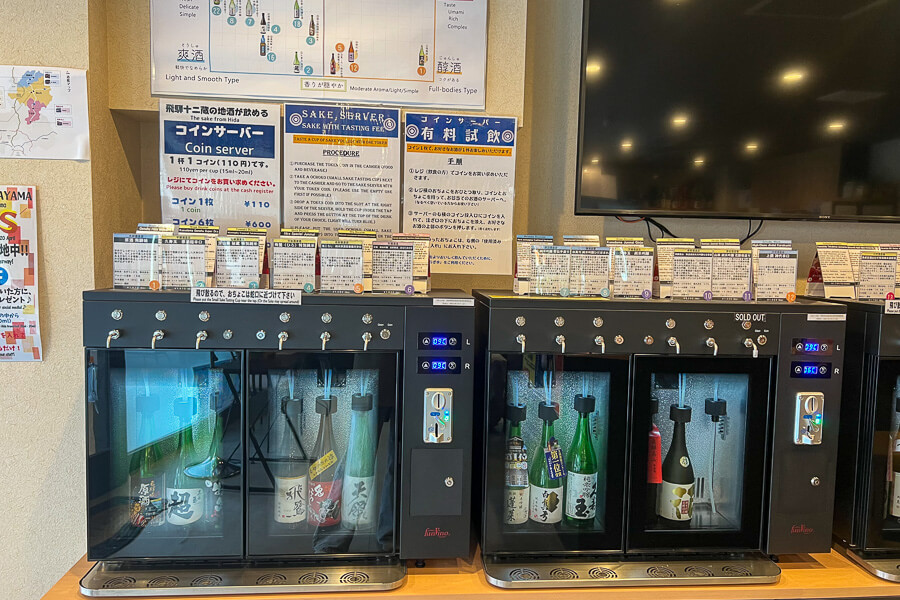
Things to Do & See
- Sample your way through the local sake breweries: this was the highlight of our time in Takayama. You’ll find numerous breweries offering free and paid tastings on the historical Sanmachi Street in Takayama’s old town. Our favourites were Harada Sake Brewery and Funasaka Brewery.
- Sample local goodies at the Miyagawa morning market, with stalls selling everything from fruit and vegetables to handcrafted goods, sweet treats and pork buns.
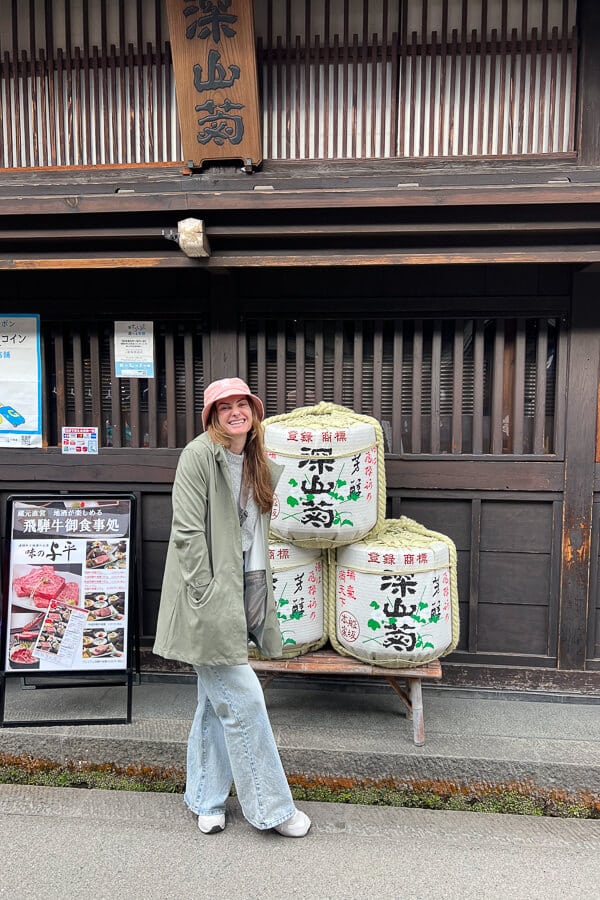
- Wander the open-air museum at Hida Folk Village, with various Edo-period farmhouses on display and historical representations
- Hike the Higashiyama Walking Course. It wasn’t very well signed, but we started from the Higashiyama Hakusan Shrine, walking to the Koryuzan Sogenji Temple before following the Enako River and crossing over into the forest to hike to the Takayama Castle Ruins. From here, we enjoyed the change in forest scenery and were rewarded with views across the city once we reached the peak of the hill where the sparse ruins are located.
- Check out my 2 days in Takayama itinerary for more

Where to Eat
- Ramen Menya Toto: Everyone heads to Menya Shirakawa to try the local style Takayama ramen, but wanting to avoid the long lines we came across Ramen Menya Toto around the corner. Here we thoroughly enjoyed the Takayama style ramen and house specialty shoyu ramen (with no queuing required!)
- Center4 Burgers: retro and quirky restaurant serving up juicy hamburgers (reservations recommended)
- Falo Coffee Brewers: We had a delicious hand-drip coffee and chatted with the barista who had spent time working in Australia (hence you know he makes good coffee!).
- Jakson Curry: Brilliant little Japanese curry shop – bookings are recommended as it’s extremely popular!
Where to Stay
- Budget – Guesthouse Tomaru: Simple Japanese guest house with shared bathrooms near the train station. The owner was extremely friendly and helpful (note that bookings only open a few months beforehand)
- Mid-Range – Wat Hotel & Spa: This trendy, modern hotel is located near the station and includes an onsen, pool and rooftop lounge area.
- Luxury – Hotel Wood Takayama: A luxurious, architectural hotel located near the centre of Takayama’s old town. Facilities include an onsen plus free-flow sake tastings.
Days 26-27: Matsumoto
Time for the final stop of your week-long adventure in the Japanese Alps.
Head to JR Takayama Station and purchase a ticket from the counter for the direct bus to Matsumoto (2.5 hours). At the time of writing, there are 4 direct routes per day, you can check the timetable here.
When we caught the bus in 2023, reservations were not required for this journey and we bought tickets at the bus station (located next to the train station). The website now states that bookings are required from 2024, so I recommend purchasing tickets in advance.
The main drawcard in Matsumoto is the striking Matsumoto Castle. It earns its nickname of the “Crow Castle” due to its shiny black exterior. Like Himeji Castle, Matsumoto is one of the only twelve remaining original castles in Japan.
We saw quite a few castles after spending a month in Japan, and can say that this was without a doubt one of our favourites!


Things to Do & See
- Visit the Matsumoto Castle: of course, this is going to be at the top of your list! I recommend visiting during the day, including heading inside the castle to the top level, and then later at night to see the castle illuminated from the outside.
- Explore the Nawate-dori shopping street which runs parallel to the river – keep an eye out for the frog statues!
- Try local craft beer at one of the two Matsumoto Brewery tap rooms
- Visit Matsumoto City Museum of Arts, featuring exhibitions of works by Yayoi Kusama, a Matsumoto local known for her polka dots and pumpkin pieces.
- Try the Matsumoto food specialities, including soba buckwheat noodles and sanzokuyaki (fried chicken!)
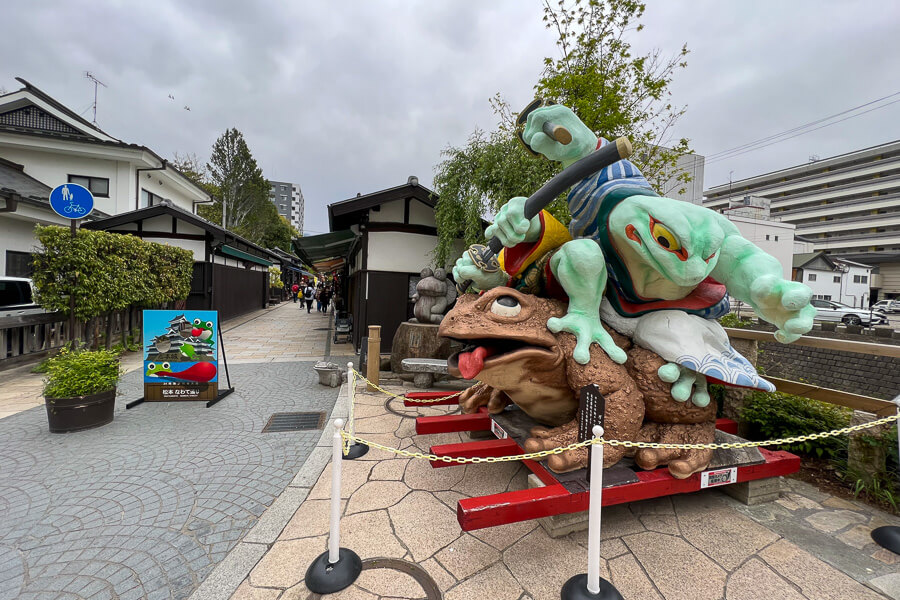
Where to Eat
- Matsumoto Karaage Center: we headed to this fried chicken joint above the train station to try Sanzokuyaki, the local specialty fried chicken.
- Kobayashi Soba: upscale, refined soba noodle restaurant near the local shrine on Nawate-dori shopping street – some of the fanciest noodles we’ve ever had!
- Yamameya: a local yakitori joint we discovered near our guesthouse
Where to Stay
- Budget – Couch Potato Hostel: This friendly hostel has private tatami mat rooms, clean shared bathrooms and comfy common spaces
- Mid-Range – Tabino Hotel: Close to the train station, this hotel offers compact rooms with public onsen facilities.
- Luxury – Onyado Nono Matsumoto Hot Spring: This 4-star hotel is within walking distance from the station. With beautiful interiors and a natural hot spring onsen, it offers great value-for-money luxury accommodation in Matsumoto.
Explore all accommodation options in Matsumoto
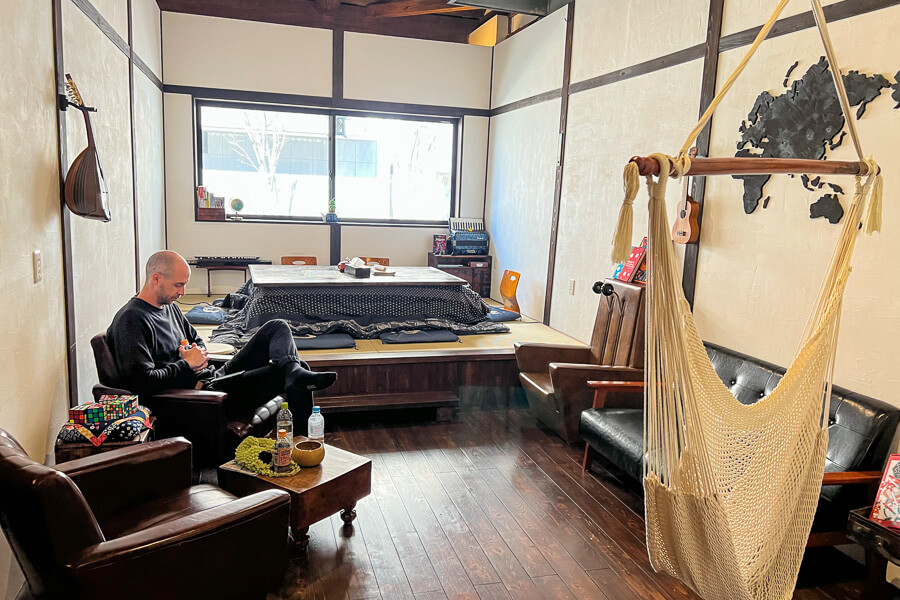
Days 27-28: Back to Tokyo
Check out of your accommodation in Tokyo and make your way back to Tokyo for one last night in Japan before flying home.
The quickest and most direct option to get to Tokyo from Matsumoto is to catch the JR Limited Express Chuo Line, which runs once or twice an hour and takes 2.5 hours to reach Shinjuku Station (¥6,620, covered by JR Pass).
A cheaper alternative is to get the direct highway bus, which takes 3 hours (¥4,100). Reservations can be made in advance here.
Spend your last afternoon in Tokyo fitting in any sites or activities you didn’t get time for at the start of your trip, or simply wander the maze of brightly lit streets and absorb the smorgasbord of sights, sounds and atmosphere that is the wonderful city of Tokyo.
Final Thoughts – 1 Month in Japan
That wraps up this epic 4 week trip to Japan.
While a month in Japan feels like a long time, let me assure you it will fly by in a flash. If you are anything like me, you might find yourself left with an even deeper desire to spend more time exploring the incredible towns and cities across Japan. This four week Japan itinerary honestly just showed me how much more of Japan there is to explore, so I know I’ll be back again soon to uncover more of the vibrant and remarkable places across Japan.
I hope this 1 itinerary has been useful, let me know in the comments below if you have any burning questions! Make sure to check out my other Japan travel guides for more help in planning your Japan adventures.
Japan Itineraries:
- A Fun 7 Day Tokyo Itinerary: Complete 1 Week in Tokyo Guide
- The Perfect 3 Day Kyoto Itinerary: How to Avoid the Crowds
- An Exciting 4 Days in Osaka Itinerary for First-Timers
- Takayama Itinerary: 2 Days Discovering Traditional Japan
- Exploring Fuji Five Lakes: 3 Days in Kawaguchiko Guide
More Japan Guides:
- START HERE: How to Plan a Trip to Japan: Ultimate Japan Travel Guide
- Is Japan Expensive? My EXACT Japan Trip Cost Breakdown Revealed
- 15 Things to Know Before Visiting Japan for the First Time
- Cool Stuff to Buy in Japan: 20 Souvenirs Actually Worth Buying
- 10 Most Mesmerising Views of Mt Fuji from Kawaguchuiko
- Koyasan Temple Stay: Essential Travel Guide & Tips

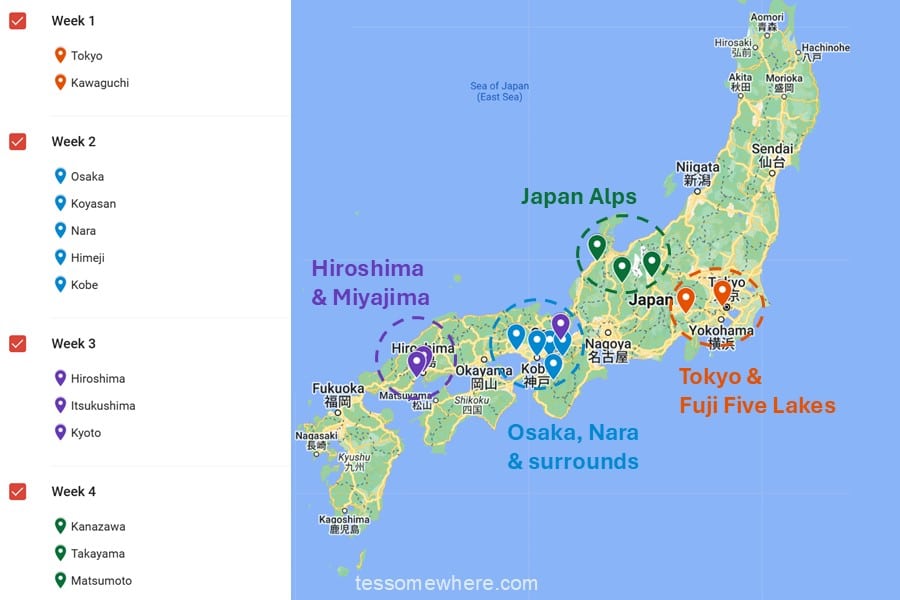
I found your 1 month Japan itinerary very informative and am planning a 3 wk trip for my 4 person wanderlust cadre (1st trip to Japan). I was wondering what your transport was from Fuji 5 lakes to Osaka. Did you take public transport or the rental car? And would you have any recommendations for 1 or 2 things to drop for a 3 vs 4 wk itinerary?
Cheers, and looking forward to contributing!
Jeff Goode
Chicago, IL, USA
Hi Jeff,
Thanks for reading! Excited for your upcoming Japan adventures, you’ll have a blast!
The journey from Fuji Five Lakes to Osaka involves either going back to Tokyo (I recommend the highway bus for this) and then getting the bullet train to Shin-Osaka. Another option is getting a different highway bus to Mishima Station which is one of the stops further along the Tokaido-Sanyo shinkansen line, saving you going back to Tokyo.
This option will be quicker but you’ll just have to check timings as there aren’t as many connections. All the bus and shinkansen timetables are synced into Google Maps, so it should be straight forward to work out what will suit your group best 🙂
In terms of dropping something, I would consider dropping Hiroshima/Miyajima or Kanzawa/Takayama/Matsumoto as these require more travel time to get to (save it for your next trip!)
Cheers, Tess
Hi Tess thank you-very informative! I am planning on going to see the blossoms next year for about the same length of time -I read somewhere that the season travels from west to east but most itineraries are from east to west-is that because its easier to get to Tokio? Also although the title of your blog has blossoms in it I don’t see much information in your blog specifically about blossom viewing sites-any tips would be appreciated!
Hi Lynn, I have a guide with my favourite spots in Tokyo. However you can find them spread across the country (we also saw them in Kyoto, Osaka, Kanazawa and Kawaguchiko at various stages outside peak bloom), and yes they generally bloom from west to east due to the temperatures being warmer. The Japan Meteorological Corporation release a blooming forecast each year a few months in advance (usually from early Jan), you can see an example in my article here: https://tessomewhere.com/best-place-to-see-cherry-blossoms-in-tokyo/#When_Do_Cherry_Blossoms_Bloom_in_Tokyo
As this year’s cherry blossom season showed, the blooming is VERY temperature dependant so take the forecasts as a guide, and be prepared to be flexible with your plans in the lead up to the season if possible.
I was 3 weeks Osaka,Tokyo,Endorshima,Kamakura,Hiroszima,Miyajima,Kyoto,Nara,Osaka.
It cost me about 7000 PLN – 1,769.51 USD. This included souvenirs, some more expensive visits like Teamlab Tokyo. I used trains and planes to travel around Japan. And this included flight Warsaw Osaka flights.
Hi, can you explain the most convenient, or how you travelled from Fuji Five lakes to Osaka? Do you have to back track to Tokyo?
Hi Conall,
Good question! I’ve actually answered this in another comment below, but see a copy of my response 🙂
The journey from Fuji Five Lakes to Osaka involves either going back to Tokyo (I recommend the highway bus for this) and then getting the bullet train to Shin-Osaka. Another option is getting a different highway bus to Mishima Station which is one of the stops further along the Tokaido-Sanyo shinkansen line, saving you going back to Tokyo.
This option will be quicker but you’ll just have to check timings as there aren’t as many connections. All the bus and shinkansen timetables are synced into Google Maps, so it should be straight forward to work out what will suit your group best 🙂
Hi Tess, just started planning my first trip to Japan end of April 2025. Love the itinerary you put together! Unfortunately or fortunately I am there for Golden week so trying to be proactive in my planning. You had recommended booking trains through Klook. Is there any delay on the release of seats compared to booking directly on the rail site? I’m going to be going from Fuji to Osaka on May 4, 2nd last day of GW and want to make sure I’m on top of booking the bus back to Tokyo and then the train to Osawka.
Thank you
Hi Stacey, for purchasing tickets online in advance you have three main options (1) official JR-east website, (2) SmartEx app (most routes west of Tokyo) and (3) Klook. Klook can be a little simpler to navigate as its designed for English speakers versus the other two (and there’s a slightly higher price as a result), but I also used SmartEx successfully for our tickets from Tokyo to Osaka. Sometimes you can get advance purchase discounts too when using SmartEx. As long as you purchase your tickets a few weeks in advance, I wouldn’t worry too much about availability between the three websites. Golden Week is busy, but you sound very prepared 🙂 it’s more a warning for people who rock up to the station on the day or day before trying to get reserved tickets, which might be difficult during this travel period!
Thank you Tess that makes me feel alot better. I’ve also decided to take the train, hopefully the Fuji Excursion, from Shinjuku on the day before GW officially starts and the bus back to Tokyo Station on May 1 as most should be leaving Tokyo not Fuji. Explore Tokyo then take the Shinkansen from Tokyo Station to Shin-Osaka on the 4th for the same reason as the bus. Any flaws?
Do you recommend booking lockers at train stations ahead of time? I want to take your advice and stay in Mijajima for the 2 nights but will need to store my luggage at the train station while I explore Hiroshima and before taking the ferry.
Hi Stacey,
Your plan looks good to me! As far as I’m aware, the public lockers in the major stations aren’t bookable – my advice is to get there early (e.g. before 8-9am) for the best chance to snag a larger locker. Otherwise there are businesses that offer luggage storage services, such as at the JR East Travel Service Center in Tokyo Station, for example (I’m sure Shinjuku has similar options too if departing from there).
Great itinerary! We are planning to be in Japan this year for at least a month and this is a helpful guide, thank you!
I’m just wondering, from the Fuji five lake, may i know why you went to Osaka first then Kyoto? Looking at the map Kyoto is closer, though not much of a difference really.
Thanks Kay! Appreciate your kind comments, and I’m glad my guide is useful. You totally can go to Kyoto first, although if you head to Kanazawa you’ll be passing through Kyoto on the train anyway, so that’s why I did Osaka>Kyoto>Kanazawa – but either way works 🙂
Hi Tess, thank you for responding!
I was thinking from Fuji five we go to Osaka, use it as base for all the day trips including Kyoto, since it’s just under an hour travel. Then from Osaka we go to Hiroshima, from there to Kanazawa (passing thru Kyoto). I’m thinking of doing this to reduce the number of transfers(hotel). Though the accommodations i see in Kyoto are tempting!
Does this make sense? It’s our first time in Japan and would love to hear what others that have experienced Japan think about this plan.
Thank you!
Hi Kay, yes that works! I personally have always stayed in Kyoto, just so I can save on travel time and get to busy sights earlier in the day, but its very feasible to do as a day trip from Osaka. I’ll be doing this myself for my next trip in May. Minimising transfers is always a good idea in my books 🙂
Hi Tess,
I’m finding your 4-week itinerary very informative and it’s really helping me plan my upcoming trip! Just wanted to ask in relation to the Japanese Alps part of your trip, why you did 3 nights in Kanazawa and 2 nights in Takayama? I read your 2-night itinerary of Takayama and it seemed like lots to see there but you’ve got an extra night in Kanazawa. Can I why? Is there more to see in Kanazawa and the surrounding areas?
Thank you!
Hi Tess,
I’m finding your 4-week itinerary very informative and has been really helpful in planning my own trip! But I did want to ask a question in relation to the Japanese Alps portion of the trip. Why do you stay 3 nights in Kanazawa and 2 nights in Takayama? I read your blog about spending 2 days in Takayama and it seems like there’s a lot to see in and around the city but you stay an extra night in Kanazawa. Can I ask why? Is there more to see in and around Kanazawa?
Thank you!
Emma
Hi Emma,
In terms of city size, Kanazawa is a lot bigger than Takayama – I felt 2 nights was enough for us in Takayama, unless you want to do a separate day trip to Shirakawago. However, if you want to do 2 nights Kanazawa and 3 nights Takayama, go for it – you’ll never run out of things to do and see when travelling in Japan 🙂
Happy adventuring, Tess.